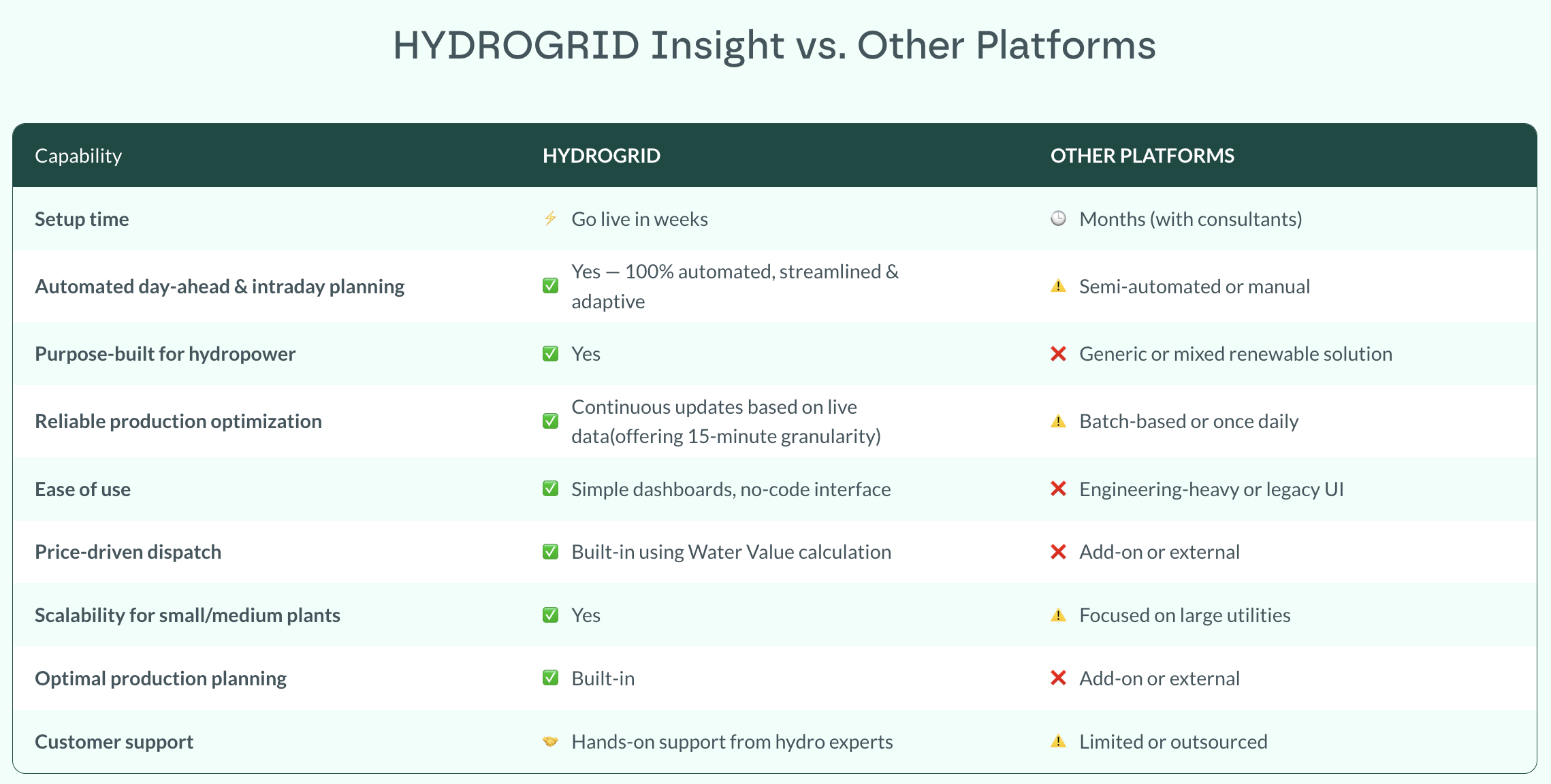Hydropower is the backbone of renewable flexibility — but it’s being held back by generic tools. Yet most energy software treats it like wind or solar, ignoring the operational complexity that makes hydro truly unique. At HYDROGRID, we believe it’s time to change that narrative.
While wind and solar have benefited from a wave of digital innovation, hydropower — despite being the most flexible renewable — continues to be underserved by tools that weren’t built to address its unique challenges.
At HYDROGRID, we believe it’s time to change that narrative.
Hydropower Isn’t Just Another Renewable
Unlike wind and solar, hydropower is deeply intertwined with water management, environmental obligations, and complex operational constraints. It’s not just about generating electricity and balancing the grid — it’s also about balancing inflows, reservoir levels, downstream dependencies, and regulatory requirements, often in real time.
Generic energy management tools, originally designed for intermittent sources like wind or solar, simply don’t capture this complexity. They’re often retrofitted to “work” for hydro — but that’s like trying to fit a square peg in a round hole.
Purpose-Built vs. Retrofitted: Why It Matters
Most energy software platforms were built with wind and solar in mind. Their core assumptions — predictable generation patterns and minimal operational constraints — don’t hold up in hydropower environments.
Hydropower operators need tools that:
- Understand cascade dependencies and multi-reservoir systems
- Integrate environmental flow obligations and licensing constraints
- React to unpredictable inflows and seasonal variability
- Support real-time decision-making for both energy and water management
A purpose-built solution doesn’t just “accommodate” these needs — it’s designed around them.
Forecasting: One Size Doesn’t Fit All
Forecasting is another area where generic tools fall short. Wind and solar forecasting relies heavily on weather models and irradiance data. Hydropower, on the other hand, depends on hydrological models, catchment-specific inflow patterns, and historical water behavior.
Hydropower systems are shaped by more than just catchment characteristics — they’re defined by geography, geology, and hydrology.
Take the Alps and the Rockies, for example. While both are mountainous regions, their geological structures, snowmelt patterns, and catchment dynamics differ significantly. Applying the same forecasting model to both would lead to inaccurate predictions and poor operational decisions.
Hydropower forecasting needs to be:
- Localized and catchment-aware
- Adaptive to changing inflow conditions
- Integrated with operational constraints and market signals
Hydropower Teams Deserve a Better Toolset
Hydropower is the backbone of renewable flexibility. But without the right tools, operators are stuck in a cycle of manual planning, fragmented data, and reactive decision-making.
HYDROGRID changes that. Our purpose-built platform for hydropower delivers:
✅ Automated day-ahead & intraday planning
✅ Minimal setup — go live in weeks, not months
✅ Clear visuals and actionable insights
✅ Built specifically for hydropower
Because when it comes to hydropower, a tool that “works fine” just won’t cut it anymore.

Ready to See the Difference?
Hydropower isn’t generic. Your software shouldn’t be either.
Explore HYDROGRID →


